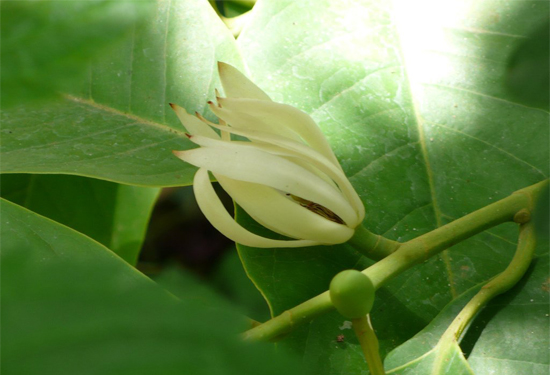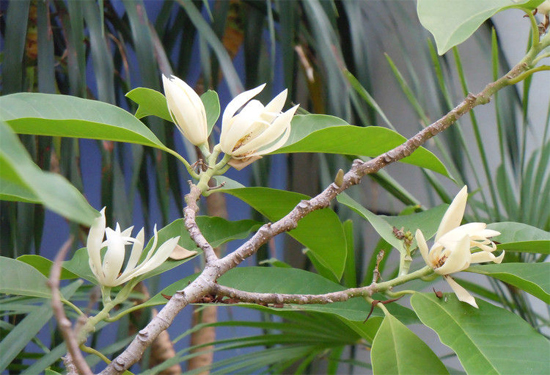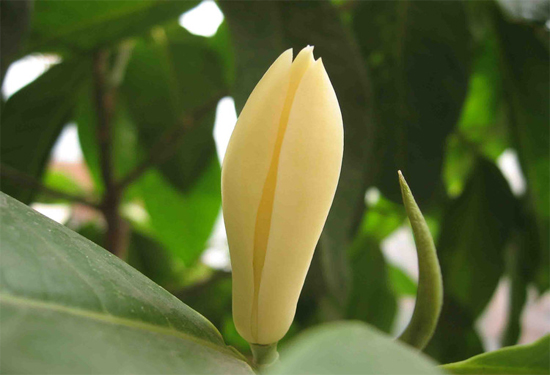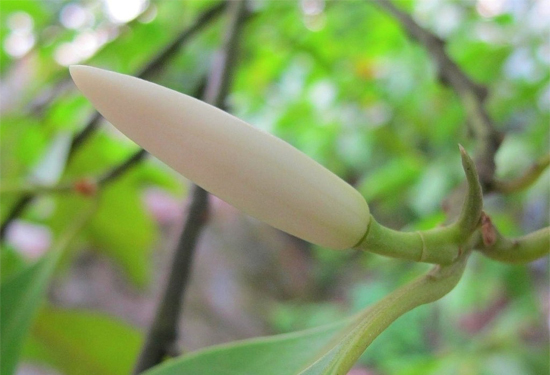Explanation of cultivation techniques of Cymbidium lanceolata Analysis of planting techniques of Cymbidium
Introduction: Huang Yilan's fragrance, fresh, elegant, hazy, just like the first love, ashamed to approach, but eager to approach. A flower, like a graceful woman, is slim and plump. Many women wear it on their chest, giving off fragrance and a sense of spring. The following editor will explain the cultivation techniques and planting techniques of Huang Xilan for you.

Huang Yilan white petals are long, with a heavy yellowish texture, and the sword-like petals are pitifully wrapped with a green calyx, which is plain and elegant. Huang Yulan has the taste of sunshine, a touch of grass, as elegant as water, such as a lady in the south of the Yangtze River. Cymbidium leaves transpiration fast, water consumption, summer is often a little late watering, the edge of the leaf will scorch, and even burn tender shoots. Insufficient watering, basin soil is too dry, there will be leaf color yellow scorched edge phenomenon. Watering should be thoroughly watered to avoid root watering.

Cymbidium is a fleshy root, and the amount of water in the basin is not conducive to the growth of the root system, especially for fear of stagnant water, which is easy to cause root blackening and decay. In the rainy season, it is necessary to pour the basin sideways and pay attention to waterlogging; it is found that the yellow leaves or leaves caused by rotten roots turn red, and watering should be strictly controlled. Even when the leaves are soft and hang down, the irrigated water should be stored first to adapt to the temperature.

Huang Yilan should enter the room in front of the Beginning of Winter, otherwise a cold frost will damage the new shoots and young leaves of Magnolia, which can survive the winter in about 15 ℃ during the day and at a room temperature of not less than 5 ℃ at night. If you see the leaves wrinkle and fall off, it means you are cold; if the leaves show brown spots, dry tips and fall off, it means that the indoor temperature is too high.

Due to the many times of flowering, one flowering consumes a lot of nutrition, so it must be replenished in time, otherwise it will inevitably affect flowering. It is appropriate to apply rotten human dung, urine and oil, apply light liquid fertilizer in early spring, gradually concentrate, and add appropriate amount of ferrous sulfate. Do not apply fertilizer when it is too dry or too wet. In summer, you can irrigate fertilizer in the afternoon and water in the evening to dilute the fertilizer and water to disperse the root heat so as not to burn the root.
Recommended reading: how to cultivate Prunus mume how to cultivate potted Lotus introduction to cultivation techniques of Jasmine Flower
Related
- Wuhan Hospital Iron Tree Blooming Result Was Instantly Frightened by the Gardener Master
- Which variety of camellia is the most fragrant and best? Which one do you like best?
- What is the small blue coat, the breeding methods and matters needing attention of the succulent plant
- Dormancy time and maintenance management of succulent plants during dormancy
- Minas succulent how to raise, Minas succulent plant pictures
- What are the varieties of winter succulent plants
- How to raise succulent plants in twelve rolls? let's take a look at some experience of breeding twelve rolls.
- Attention should be paid to water control for succulent plants during dormant period (winter and summer)
- Watering experience of twelve rolls of succulent plants
- Techniques for fertilizing succulent plants. An article will let you know how to fertilize succulent plants.



